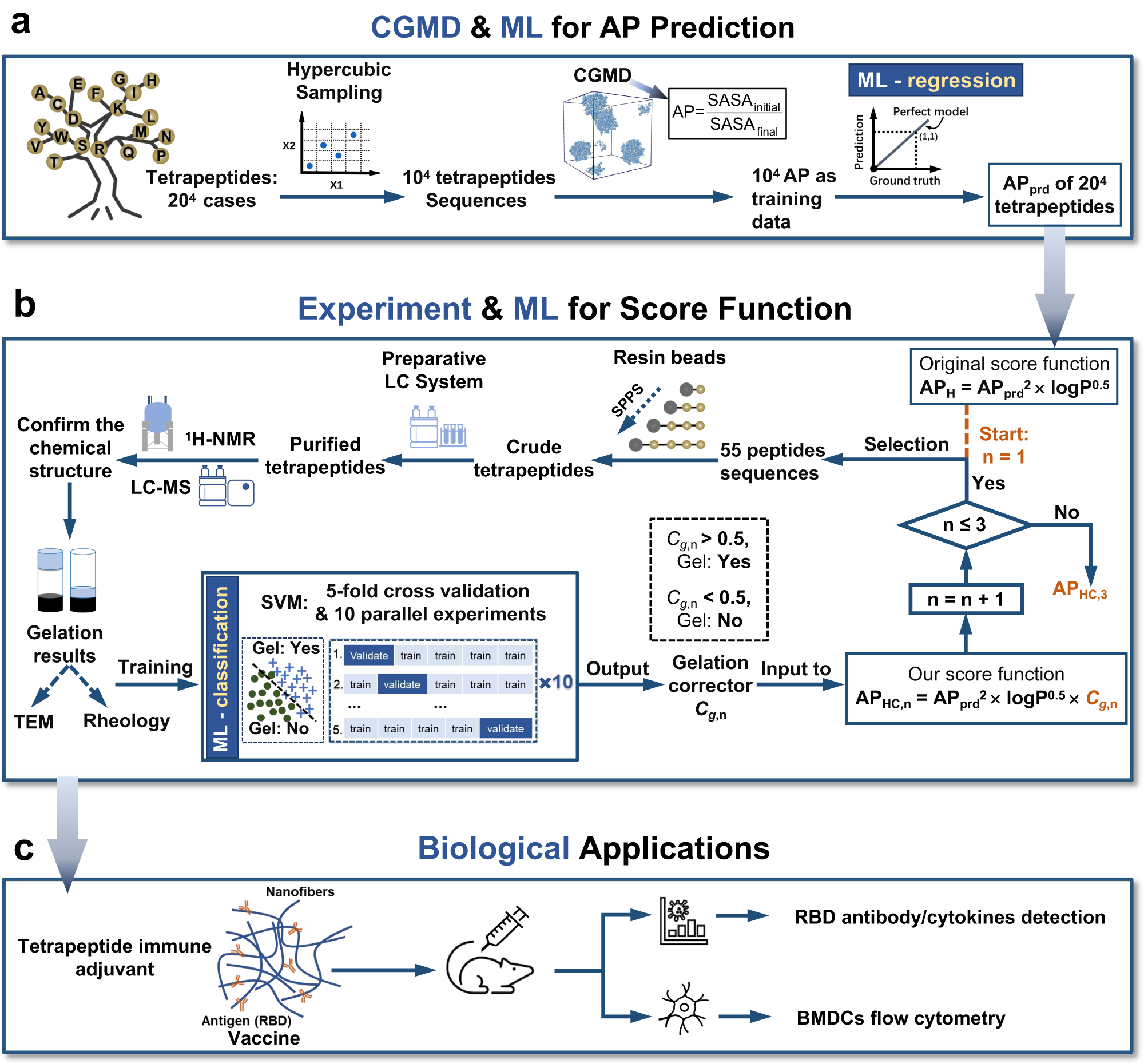




Search websites, locations, and people

New Method Accelerates Peptide Hydrogel Discovery, Opening New Avenues for Medical Applications
07, 2023
Email: sangeet@westlake.edu.cn
Phone: +86-(0)571-88112035
Office of the Dean, School of Science
Researchers at Westlake University have developed a new method that integrates experiments with machine learning to achieve more accurate prediction and discovery of peptide hydrogels. The new method could pave the way for new applications in materials science, biomedicine, and semiconductor technology.
The research, jointly led by Prof. Huaimin WANG of the School of Science and Prof. Wenbin LI of the School of Engineering, was recently published in the journal Nature Communications under the title “Accelerating the prediction and discovery of peptide hydrogels with human-in-the-loop.”
Hydrogels are soft materials that immobilize water and mimic properties in natural systems such as the bodies of jellyfish, the cornea in the eye, and even the condensed chromatins in the cell nucleus. In recent years, scientists have paid much attention to hydrogels formed by peptides because of their possibilities for various biomedical and biotechnological applications. However, system studies on peptide hydrogel formation and design of peptide hydrogels are less explored and remain challenging.
The study carried out by the Westlake team has successfully demonstrated that their “human-in-the-loop” framework, which integrates coarse-grained molecular dynamics, machine learning, and experiments, could be a novel approach to the prediction and discovery of peptide hydrogels.
 (Fig. 1: Workflow of coupled experimental and machine learning approach for discovering tetrapeptide hydrogels and their potential biological applications.)
(Fig. 1: Workflow of coupled experimental and machine learning approach for discovering tetrapeptide hydrogels and their potential biological applications.)
For the study, the researchers chemically synthesized more than 160 natural tetrapeptides and evaluated their hydrogel-forming ability, and then employed machine learning-experiment iterative loops to improve the accuracy of the gelation prediction, building a score function for discovering tetrapeptides for hydrogelation with an improved hit rate.
Their study has presented a complete picture of the relationship between the gelation ability and position & type of 20 natural amino acids, providing schematic guidance for experimentalists to design tetrapeptide hydrogels and possibly functional applications associated.
The advantage of self-assembling peptide materials is their remarkable multivalency, which contributes to improved immunogenicity. So, the researchers went a step further and tested tetrapeptide hydrogels developed through their “human-in-the-loop” framework on the RBD of the spike protein covering the surface of SARS-CoV-2 in the mice model to see if the hydrogels could provide a biodegradable platform to encapsulate RBD protein and enhance the humoral immune response against RBD protein.
Their findings showed that de novo-designed tetrapeptide hydrogels as immune adjuvants successfully enhanced the immune response to RBD protein in vivo, offering the potential to explore the natural tetrapeptide hydrogel library for developing versatile biological and medical applications.
Their novel approach taps into the potential of machine learning for predicting peptide hydrogelator and significantly expands the scope of natural peptide hydrogels.
Moving forward, the “human-in-the-loop” framework can be further automated by employing a robotic platform for synthesizing new peptides and performing machine learning for training classification models, according to the study.
Moreover, their framework can also be extended to the efficient design of other functional materials/devices, including terminal-covered peptide hydrogels, peptide batteries, peptide fluorescence probes, and peptide semiconductors, contributing to modern organic nanotechnology employing short peptide building blocks as key structural and functional elements.
The study received support from the National Natural Science Foundation of China, the Research Center for Industries of the Future (RCIF) at Westlake University, and the Zhejiang Postdoctoral Science Foundation.
RELATED
NEWS
New Method Accelerates Peptide Hydrogel Discovery, Opening New Avenues for Medical Applications




















